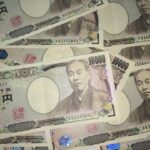
The US Dollar is known to have profound impacts on other markets once it rises or falls sharply. Think of the US Dollar rally in 2015 which caused crude oil to crash, but also serious Dollar weakness in 2016 resulting in the strong rise in emerging markets and base metals. These examples reveal the outspoken negative correlation between Dollar vs. emerging markets and commodities. What is likely to happen in the Dollar going forward, and how may it impact emerging markets and commodities in 2018 and beyond, is what InvestingHaven’s research team tries to forecast in this article.
The US Dollar impact on emerging markets
First of all, emerging markets have a strong correlation with commodities because of fundamental reasons. When emerging markets perform well they tend to increase demand for commodities, but also export much more commodities. It is sort of positive feedback loop.
As the first chart shows, emerging markets (lower pane) have done well when the Dollar was falling (upper pane), those periods indicated with a light blue oval are the ones to focus on. This chart goes back 15 years in time.
In recent years, especially the 2015 and 2016 time periods, the ones mentioned in the intro paragraph, are the ones that stand out.
The million dollar question is whether a new trend with a strong US Dollar started recently? If yes, it would imply that emerging markets will be very weak in 2018 and 2019. The opposite is true as well: if the US Dollar stops rising or even falls it would have very bullish effects on emerging markets (also on commodities).

Chart courtesy: analyst Ralf Lai from InvestingHaven
US Dollar outlook for 2018 and 2019
At InvestingHaven we tend to believe that one market heavily influences the US Dollar: Treasury yields, primarily 20-year yields. We’ll come back to this in the last chart.
On the other hand, though, looking at the long-term Dollar chart, it is clear that most often the Dollar tends to be range bound. History has shown that the vast majority of the time the Dollar trades in a range of approx. 20% (yellow boxes). Only very exceptionally there is a strong rise (green areas) sometimes followed by sharp declines (red areas).















